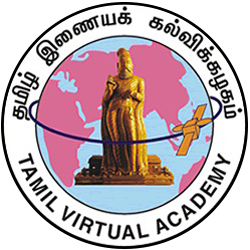Primary tabs
Stone inscriptions are found in mountain caves, and on memorial pillars and pieces of broken pots. They may be in verse or prose. There is an interesting inscription dating 926 A.D. It describes how a man called கிளிநல்லூர் உடையான் பாகன் சர்வதேவன் donated 96 goats to a Siva temple in திருவிசலூர்.
- A complete inscription has 9 parts:
- An auspicious word (e.g.) ஸ்வஸ்தி ஸ்ரீ; எல்லா நன்மையும் பெறுக.
- மெய்க்கீர்த்தி: a verse on the glory of the king
- Name of the king
- The year of inscription
Name of the Donor - Information about donation
- Witness: காப்புச்சொல் - blessing those who perpetuate this donation
- Author
The inscription ends with words like பன்மாகேசுவரர் இரட்சை or வைஷ்ணவர் இரட்சை.
Orginally round letters or வட்டெழுத்துக்கள் were used. Later grantha letters were also used. There was no punctuation and no dots on top of letters. A special dictionary is available for கல் வெட்டுகள்
Names of kings of சங்ககாலம் have been found on inscriptions; (eg) அதியமான், நெடுஞ்செழியன் etc. Even words from sangam literature have been found (eg) பண்ணன், ஆதன், பிட்டன் etc.
Many inscriptions tell us about kings and the laws promulgated by them. Here are some examples: The tanks should be desilted every year; If someone kills a hardcore criminal, he will not be punished with hanging; when people don't pay taxes to temples, their bronze vessels could be forfeited. These inscriptions do not have any relevance to the temple. But they were inscribed there so that everyone might read them.
There are inscriptions which tell us about kings, their period and their greatness. A special title was prefixed to the king's name. (eg) திரிபுவன சக்ரவர்த்தி. The name of the year when the king came to power, the month, the date, the star, and the day are also be mentioned.
The Jain monks engraved inscriptions in mountain caves where they lived. They were in பிராமி script. Later தென்பிராமி came to be known as தமிழி.
The Pallava king Mahendra Varman built rock temples. Donations to temples were inscribed on these rock walls. These inscriptions provide a fascinating account of Tamil history of earlier times.

